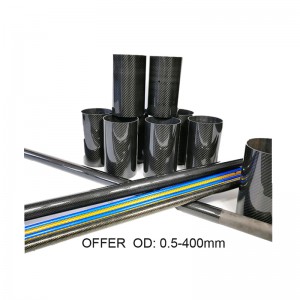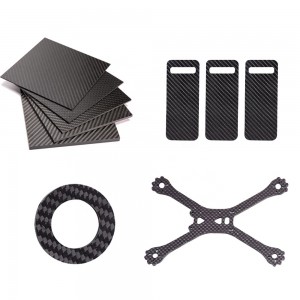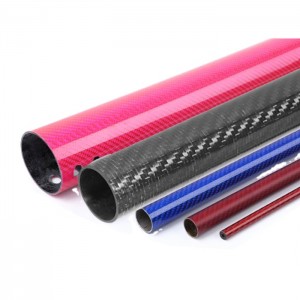The manufacture, uses, and future of this strong, lightweight material 
Also called graphite fiber or carbon graphite, carbon fiber consists of very thin strands of the element carbon. These fibers have high tensile strength and are extremely strong for their size. In fact, one form of carbon fiber—the carbon nanotube—is considered the strongest material available. Carbon fiber applications include construction, engineering, aerospace, high-performance vehicles, sporting equipment, and musical instruments. In the field of energy, carbon fiber is used in the production of windmill blades, natural gas storage, and fuel cells for transportation. In the aircraft industry, it has applications in both military and commercial aircraft, as well as unmanned aerial vehicles. For oil exploration, it’s used in the manufacture of deepwater drilling platforms and pipes.
Fast Facts: Carbon Fiber Statistics
- Each strand of carbon fiber is five to 10 microns in diameter. To give you a sense of how small that is, one micron (um) is 0.000039 inches. A single strand of spiderweb silk is usually between three to eight microns.
- Carbon fibers are twice as stiff as steel and five times as strong as steel, (per unit of weight). They’re also highly chemically resistant and have high-temperature tolerance with low thermal expansion.
Raw Materials 
Carbon fiber is made from organic polymers, which consist of long strings of molecules held together by carbon atoms. Most carbon fibers (about 90%) are made from the polyacrylonitrile (PAN) process. A small amount (about 10%) are manufactured from rayon or the petroleum pitch process.
Gases, liquids, and other materials used in the manufacturing process create specific effects, qualities, and grades of carbon fiber. Carbon fiber manufacturers use proprietary formulas and combinations of raw materials for the materials they produce and in general, they treat these specific formulations as trade secrets.
The highest grade carbon fiber with the most efficient modulus (a constant or coefficient used to expresses a numerical degree to which a substance possesses a particular property, such as elasticity) properties are used in demanding applications such as aerospace.
Manufacturing Process 
Creating carbon fiber involves both chemical and mechanical processes. Raw materials, known as precursors, are drawn into long strands and then heated to high temperatures in an anaerobic (oxygen-free) environment. Rather than burning, the extreme heat causes the fiber atoms to vibrate so violently that almost all non-carbon atoms are expelled.
After the carbonization process is complete, the remaining fiber is made up of long, tightly interlocked carbon atom chains with few or no non-carbon atoms remaining. These fibers are subsequently woven into fabric or combined with other materials that are then filament wound or molded into the desired shapes and sizes.
The following five segments are typical in the PAN process for the manufacture of carbon fiber:
- Spinning. PAN is mixed with other ingredients and spun into fibers, which are then washed and stretched.
- Stabilizing. The fibers undergo chemical alteration to stabilize bonding.
- Carbonizing. Stabilized fibers are heated to very high temperature forming tightly bonded carbon crystals.
- Treating the Surface. The surface of the fibers is oxidized to improve bonding properties.
- Sizing. Fibers are coated and wound onto bobbins, which are loaded onto spinning machines that twist the fibers into different size yarns. Rather than being woven into fabrics, fibers can also be formed into composite materials, using heat, pressure, or a vacuum to bind fibers together with a plastic polymer.
Carbon nanotubes are manufactured via a different process than standard carbon fibers. Estimated to be 20 times stronger than their precursors, nanotubes are forged in furnaces that employ lasers to vaporize carbon particles.
Manufacturing Challenges
The manufacture of carbon fibers carries a number of challenges, including:
- The need for more cost-effective recovery and repair
- Unsustainable manufacturing costs for some applications: For example, even though new technology is under development, due to prohibitive costs, the use of carbon fiber in the automobile industry is currently limited to high-performance and luxury vehicles.
- The surface treatment process must be carefully regulated to avoid creating pits that result in defective fibers.
- Close control required to ensure consistent quality
- Health and safety issues including skin and breathing irritation
- Arcing and shorts in electrical equipment due to the strong electro-conductivity of carbon fibers
Future of Carbon Fiber
As carbon fiber technology continues to evolve, the possibilities for carbon fiber will only diversify and increase. At Massachusetts Institute of Technology, several studies focusing on carbon fiber are already showing a great deal of promise for creating new manufacturing technology and design to meet emerging industry demand.
MIT Associate Professor of Mechanical Engineering John Hart, a nanotube pioneer, has been working with his students to transform the technology for manufacturing, including looking at new materials to be used in conjunction with commercial-grade 3D printers. “I asked them to think completely off the rails; if they could conceive a 3-D printer that’s never been made before or a useful material that can’t be printed using current printers,” Hart explained.
The results were prototype machines that printed molten glass, soft-serve ice cream—and carbon fiber composites. According to Hart, student teams also created machines that could handle “large-area parallel extrusion of polymers” and perform “in situ optical scanning” of the printing process.
Additionally, Hart worked with MIT Associate Professor of Chemistry Mircea Dinca on a recently concluded three-year collaboration with Automobili Lamborghini to investigate the possibilities of new carbon fiber and composite materials that might one day not only “enable the complete body of the car to be used as a battery system,” but lead to “lighter, stronger bodies, more-efficient catalytic converters, thinner paint, and improved power-train heat transfer [overall].”
With such stunning breakthroughs on the horizon, it’s no wonder that the carbon fiber market has been projected to grow from $4.7 billion in 2019 to $13.3 billion by 2029, at a compound annual growth rate (CAGR) of 11.0% (or slightly higher) over the same period of time.
Sources
- McConnell, Vicki. “The Making of Carbon Fiber.” CompositeWorld. December 19, 2008
- Sherman, Don. “Beyond Carbon Fiber: The Next Breakthrough Material Is 20 Times Stronger.” Car and Driver. March 18, 2015
- Randall, Danielle. “MIT researchers collaborate with Lamborghini to develop an electric car of the future.” MITMECHE/In The News: Department of Chemistry. November 16, 2017
- “Carbon Fiber Market by Raw Material (PAN, Pitch, Rayon), Fiber Type (Virgin, Recycled), Product Type, Modulus, Application (Composite, Non-composite), End-use Industry (A & D, Automotive, Wind Energy), and Region—Global Forecast to 2029.” MarketsandMarkets™. September 2019



Post time: Oct-29-2022
